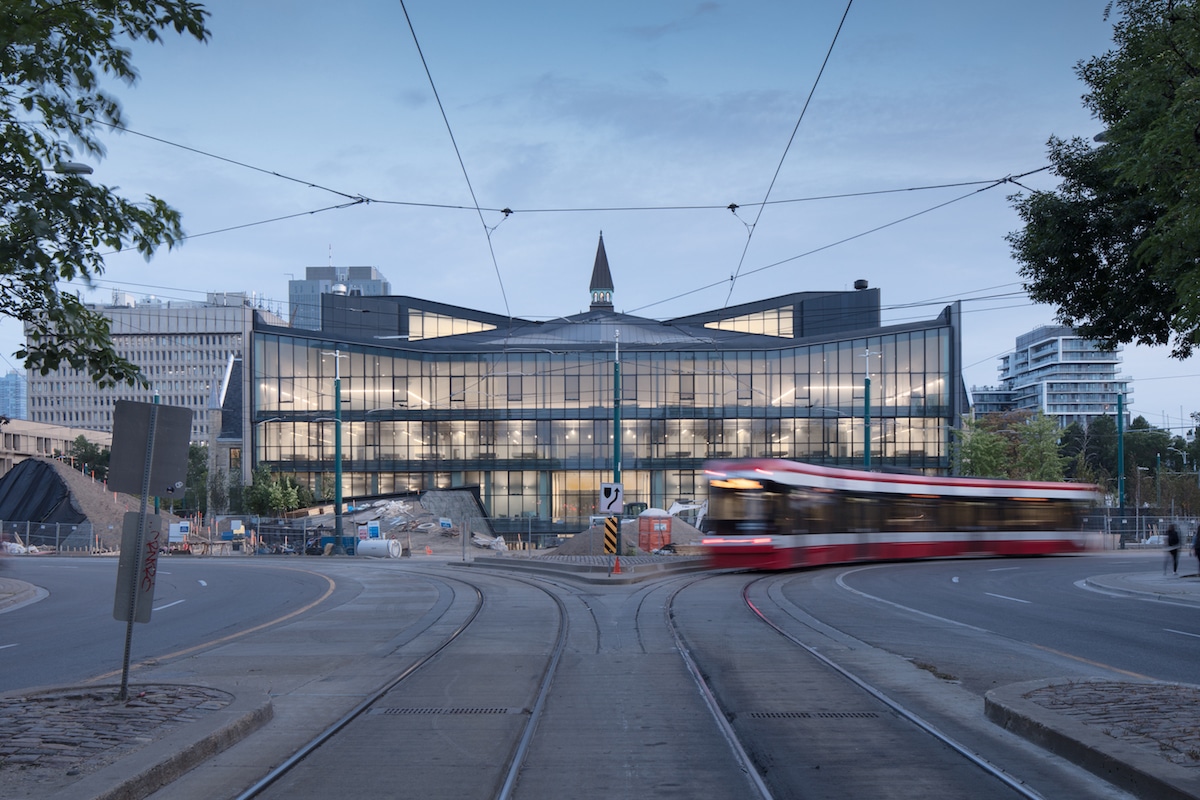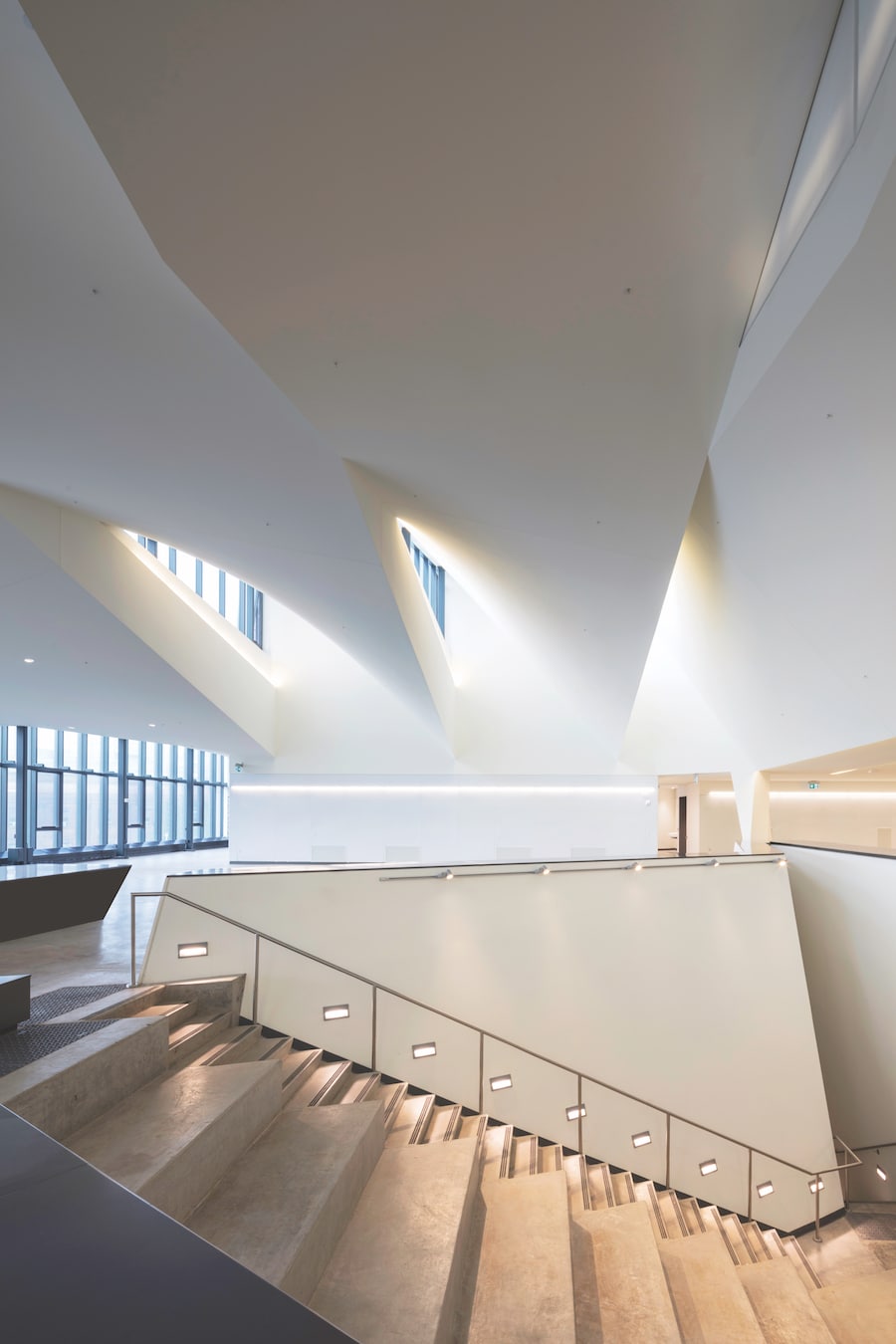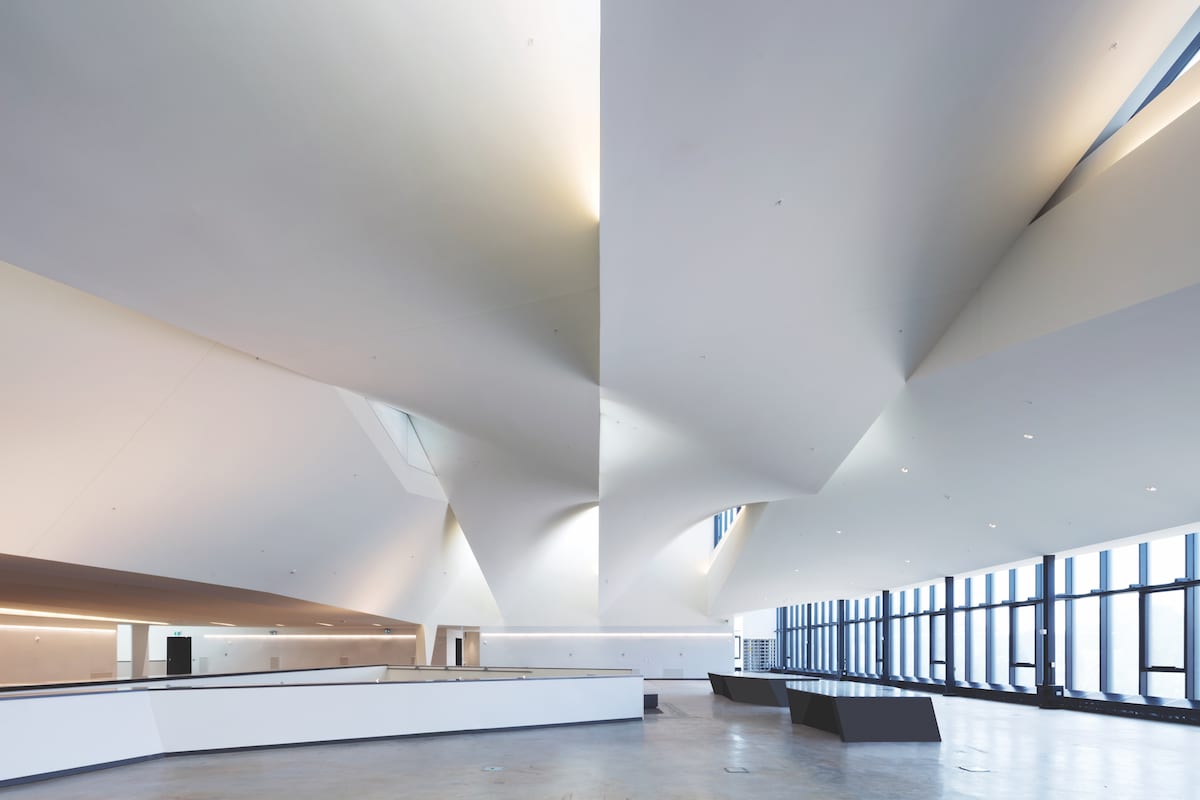
[Photo: John Horner]
LOCATION: Toronto SIZE: Approximately 156,000 square feet COST: $69 million COMPLETION: November 2017 ARCHITECTS: NADAAA and Adamson & Associates LANDSCAPE ARCHITECT: Public Work HERITAGE ARCHITECT: ERA
The restoration and expansion of One Spadina Crescent, a late 19th-century building in the center of the University of Toronto’s downtown St. George campus, presented architects with a unique challenge: How do you preserve and resuscitate an existing structure, add a contemporary addition, and create an exterior landscape that contributes to a unified whole? Raising the stakes, the building was slated to be the new home of the John H. Daniels Faculty of Architecture, Landscape and Design.
On November 17, 2017, the new building opened its doors and was instantly recognized as a marvel of historic preservation and contemporary innovation. A model of sustainable construction, the glass, stone, and steel building was designed to develop over time while simultaneously showcasing sustainable design practices like rainwater harvesting, daylighting, bicycle parking, a green roof, and the incorporation of photovoltaic technology as it evolves.
Accomplishing such a feat of integration required a sizable team of experts. Nader Tehrani and Katherine Faulkner, principals at the Boston-based NADAAA, in conjunction with architects Adamson & Associates, landscape architects Public Work, and heritage architects ERA, designed the new One Spadina Crescent. “There have been many phases of excitement and joy and anticipation,” Faulkner says. “While the building itself has a number of features you could tick off a list, proof that they really put their money where their principles are, there’s nothing more satisfying than taking an existing site and giving it another century.”
SEE ALSO: Toronto is Undergoing a Sustainable Transformation

The third-floor studio includes a great hall and skylights. [Photo: John Horner]
Sustainable Benefits
And that new century is modeled on increasingly green design values. “The client’s attitude about the renovation was oriented around sustainability and preservation,” Faulkner says. Architects and engineers discovered almost immediately that it would be almost impossible to bring the existing structure up to a 21st-century level of comfort in terms of being a fully controlled building with a full range of conditioning in the summer and heating in the winter. So the client made an early call, deciding to accept a much wider swing in comfort and set the hot-cold points a little lower and higher. “It was a remarkable way to start the project,” Faulkner says.
With that mandate set, the team looked to make the windows operable to ensure access to fresh air and help moderate temperatures, adding fans where necessary, and preparing to advise people “to wear a sweater when needed.” The existing brick from the original structure was already fairly permeable and left as is. “If you seal up a triple-thick brick wall that has been breathing for decades and you stop that ability of the drying cycle, ultimately it can really degrade the building,” Faulkner says. Conventional air conditioning was used sparingly in areas where it was essential, like the library.
There are active radiant heating and cooling surfaces—which minimized both the amount of fan power and ductwork required—in some of the most populous spaces, including studios and the street space in the middle that serves as the main entrance. “The client really felt that was so important to their goals, and particularly to their philosophy as a design school, so this was something they were willing to spend some resources on,” Faulkner says.

[Photo: John Horner]
Overcoming Challenges
Deferred maintenance on the existing building—originally the home of Knox College—at times both consumed excess resources and complicated design plans. “It had been a good 40 or 50 years since anyone put any work into it, so the surprises we encountered were endless,” Faulkner says.
Continuing excavation of the old structure delayed new construction and then eventually began to erode the available budget. But the new building, as Faulkner notes, does a lot with very little. “The big moment is the third-floor studio, which has this tremendous lifting moment of this great hall with skylights and a column-free space, like a promenade.”
The building is also proving to be an exceptional learning environment for the John H. Daniels faculty. More than 30,000 square feet is devoted to studio space, there’s an 8,000-square-foot public gallery (the only exhibition space devoted exclusively to architecture and design in Ontario), and a new fabrication laboratory with cutting-edge computational-controlled technologies. Further, the Green Roof Innovation Testing Lab was designed to study the environmental performance of green roofs, green walls, and solar photovoltaic technologies; the site includes 33 green roof test beds, three green walls, a weather station, and 270 sensors for collecting data.
“It’s such a total approach,” Faulkner says. “The building is an active, breathing structure, and it reflects the faculty’s approach to sustainability. They decided to make their commitment visible rather than being checklist-driven.”

